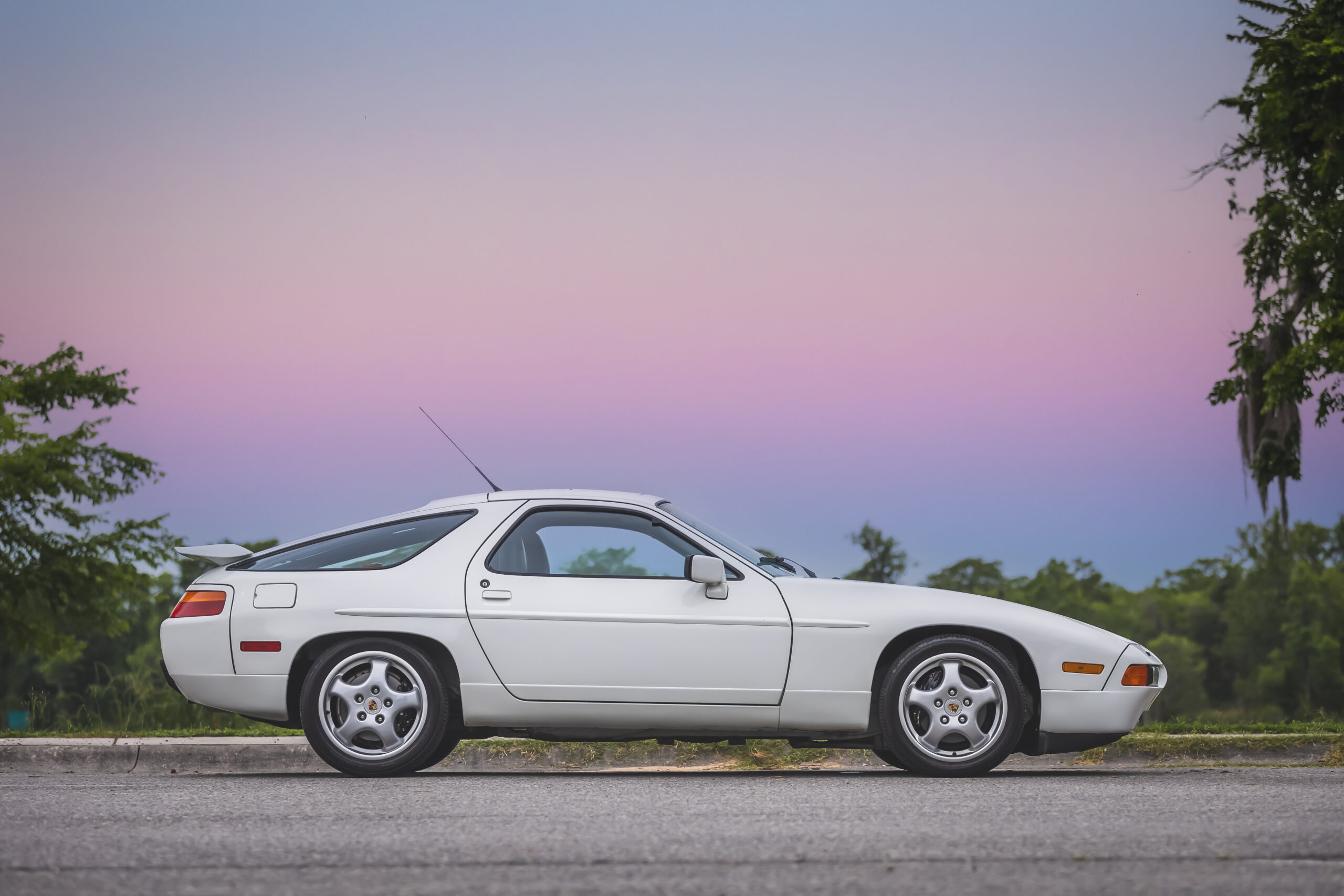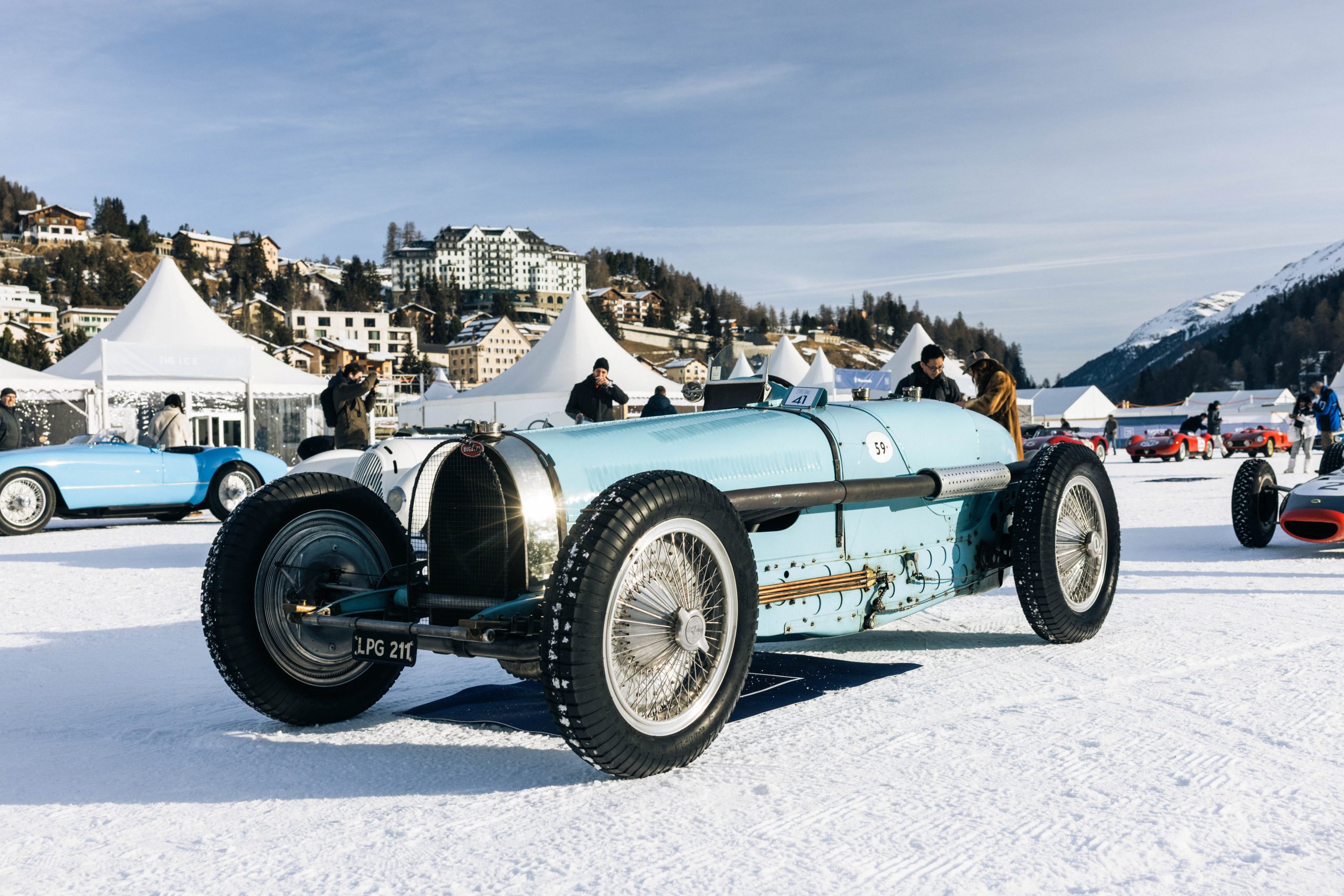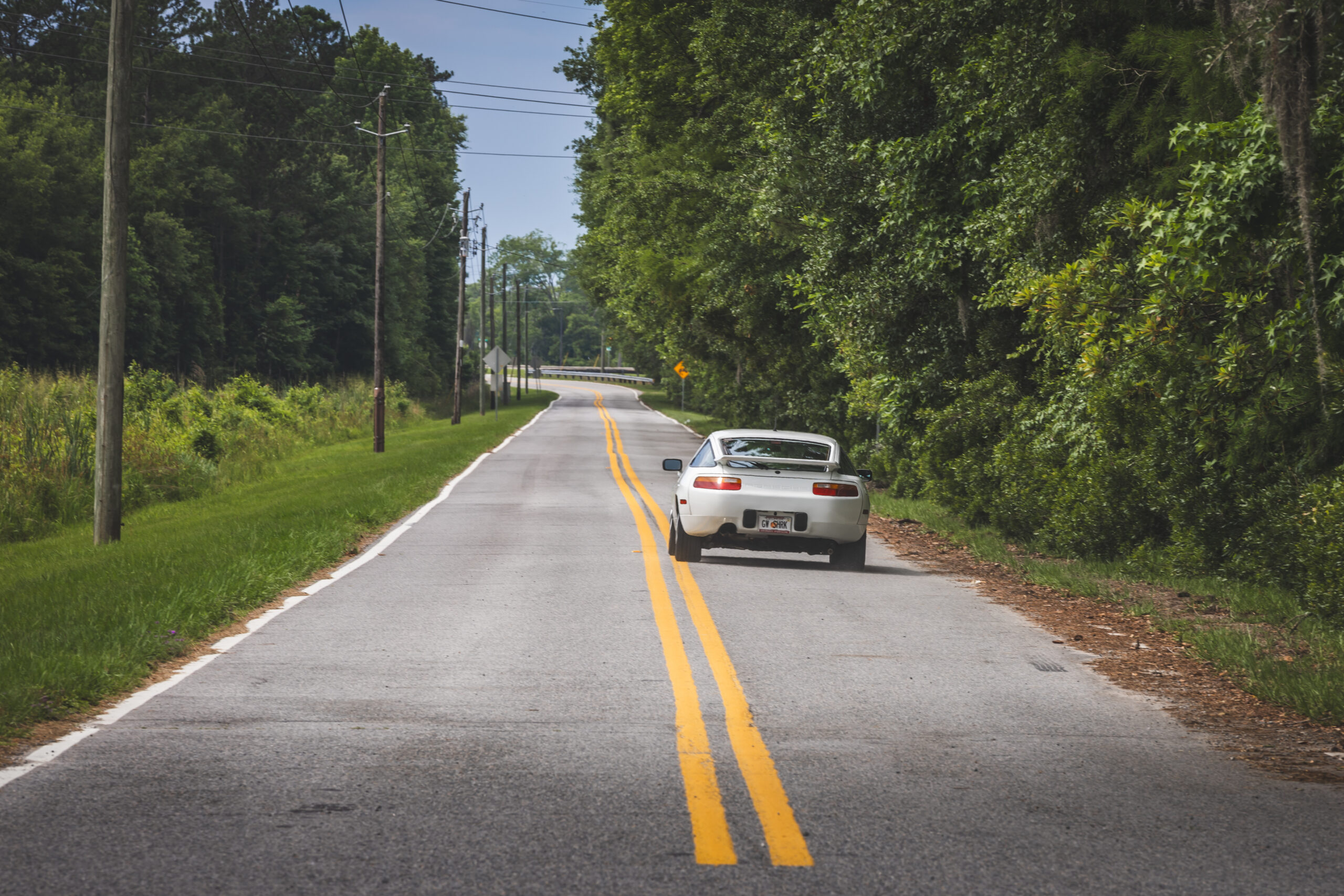It’s not only true because your grandpa says it: With age comes wisdom. And though many Porsche enthusiasts are devout traditionalists, shaped by the cult of the 911, many have gotten wise to the appeal of another car: the 928. You may recall that the 911’s existence was once in jeopardy, as Porsche faced an uncertain regulatory landscape in the 1970s that threatened its air-cooled, rear-engine sports car. Planning for the worst, executives and engineers birthed an ambitious potential successor – a clean-sheet luxury gran turismo with cutting-edge technology and styling. These were expensive machines then and they’re expensive machines now, but after spending some time behind the wheel of one, I’d argue that the later examples – the 1987–91 S4 – may be the most sage choice in the 928 family.
You can read Andrew Newton’s full deep dive on the 928’s development genesis here, but let’s cover the basics. The car’s entire purpose was to take Porsche in a bold new direction, which explains why it shares nothing with the 911, let alone any other Porsche before it. Front-mounted, water-cooled, aluminium twin-cam 90-degree V8? Pushing 240 bhp from 4.5 litres? Never seen that in a Beetle! Futuristic, low-slung shape with a long nose and pop-up headlights? Larger rear seats, big enough for kids instead of just luggage? Wunderbar! How about the first full automatic transmission offered in a Porsche (a three-speed from Mercedes-Benz, to boot), or a dogleg five-speed transaxle? And standard power steering with speed-variable assistance? Was ist das?!


Indeed, the 928 was a monumental shift of priorities, arriving for the 1978 model year with the intent to dethrone the Mercedes’ flagship two-door, the luxurious SL. A cushy cabin was in order, yes, but modern technology was the real name of the game. An aluminium hood, front wings, and doors and helped reduce the mass of the car – balanced nearly 50:50 front to rear but still exceeding 3000 pounds. Spoilers added to the 928 S for 1979 improved aerodynamics. To address safety concerns over handling, Porsche developed a clever passive safety piece dubbed the “Weissach axle,” which was a modified semi-trailing rear suspension that eliminated the ordinary design’s tendency for lift-off oversteer.
Despite Porsche’s fears, the 911 never went away, and it shared showroom real estate with the 928. At first the 928 enjoyed healthy success, both in the press and on the sales charts. (It even starred in Hollywood movies like Risky Business, an example from which sold for £1.5M in 2021.) But despite continual improvements and investment, the 928’s popularity waned as the years wore on, particularly in one of its biggest markets, America – largely a consequence of an unfriendly exchange rate that drove up prices. In the UK, too, however, they were never cheap. When they debuted in 1978, they sold for around £20,000; by the end of production, that figure was nearly £72,000, which equates to nearly £240,000 today.
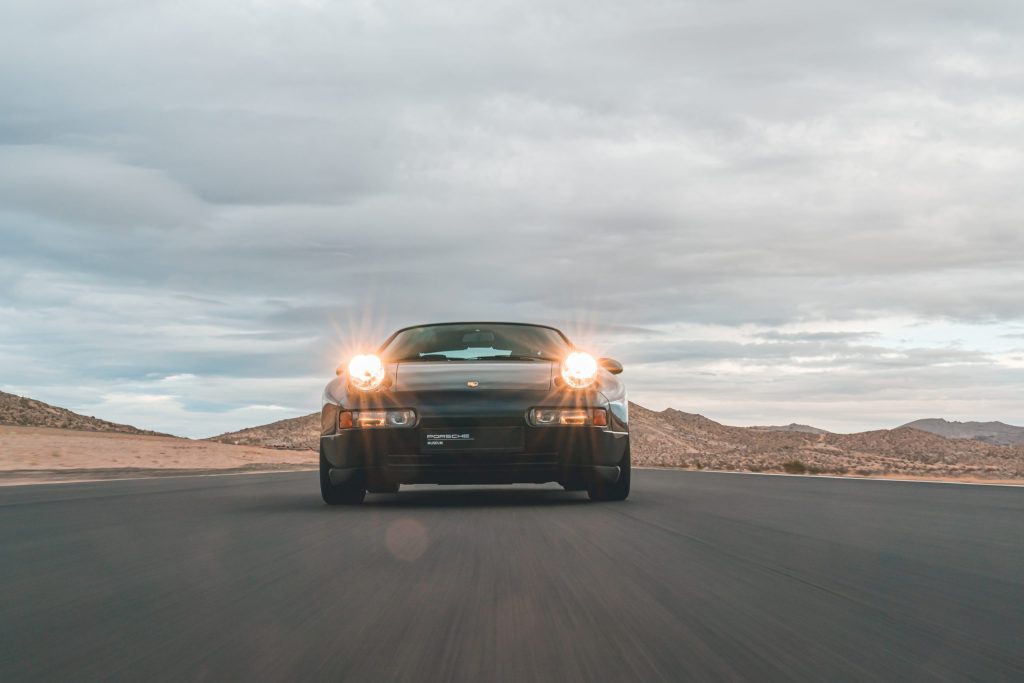
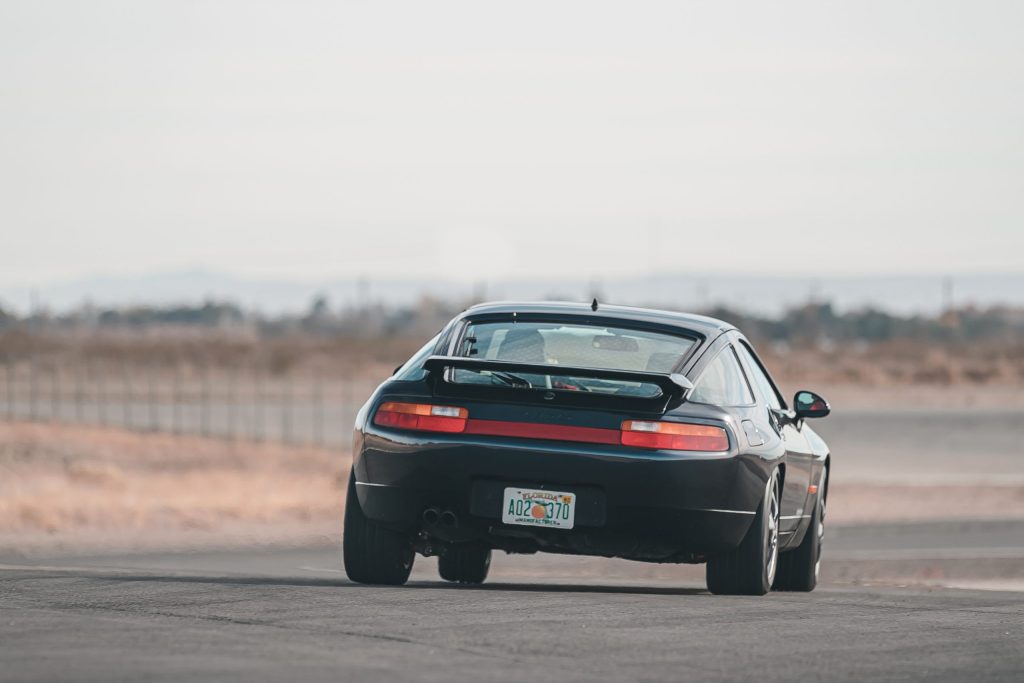
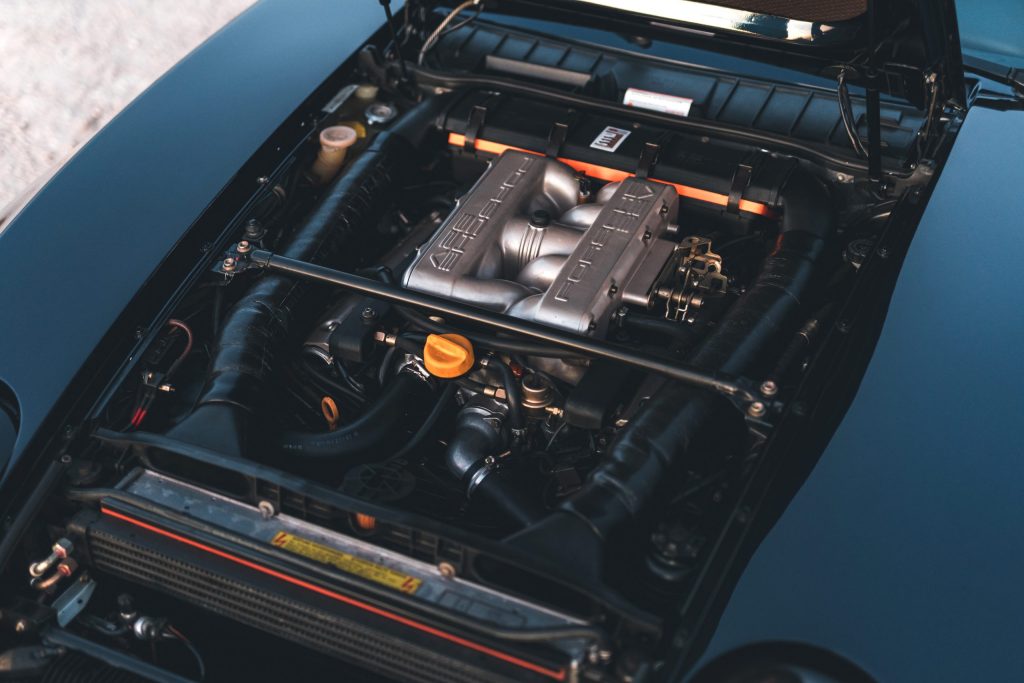
In the collector market, two of the most desirable 928s are the bookends: the earliest examples from ’78 and ’79, along with the 928 GTS supercar that ran from 1993 to ‘95. The older cars enjoy the purest expression of the 928’s distinctive exterior design, along with the beloved phone-dial wheels and retro Pasha interior. These models cost an average of £13,000 in #3 (Good) condition. The 928 GTS is a monster, pushing 350 bhp from its 5.4-litre V8 and topping out at north of 170 mph. Its widened wings and track, beefed-up brakes, and larger, 17-inch wheels all underscored that this was a luxury 2+2 with the sport knob turned so far up it broke the hell off. Price of entry here is just as intimidating: £43,500 in #3 condition.
Which brings us to the S4 – the standard 928 that hit showrooms for the 1987 model year, bringing with it a host of important changes. The V8’s displacement increased from 4.7 to 5.0 litres, which (along with upgraded cams, piston, heads, and intake apparatus) improved output to 316 bhp from the prior 288. Top speed was rated at 165 mph, though one particular Bonneville Salt Flats run in ’86 suggests the real number was 171 mph. The S4’s dogleg five-speed got a single-disc clutch while the four-speed automatics received a larger torque converter. Styling updates included an integrated spoiler up front, updated fog light assemblies, flush rear taillights, and a taller, trunk-mounted rear spoiler.

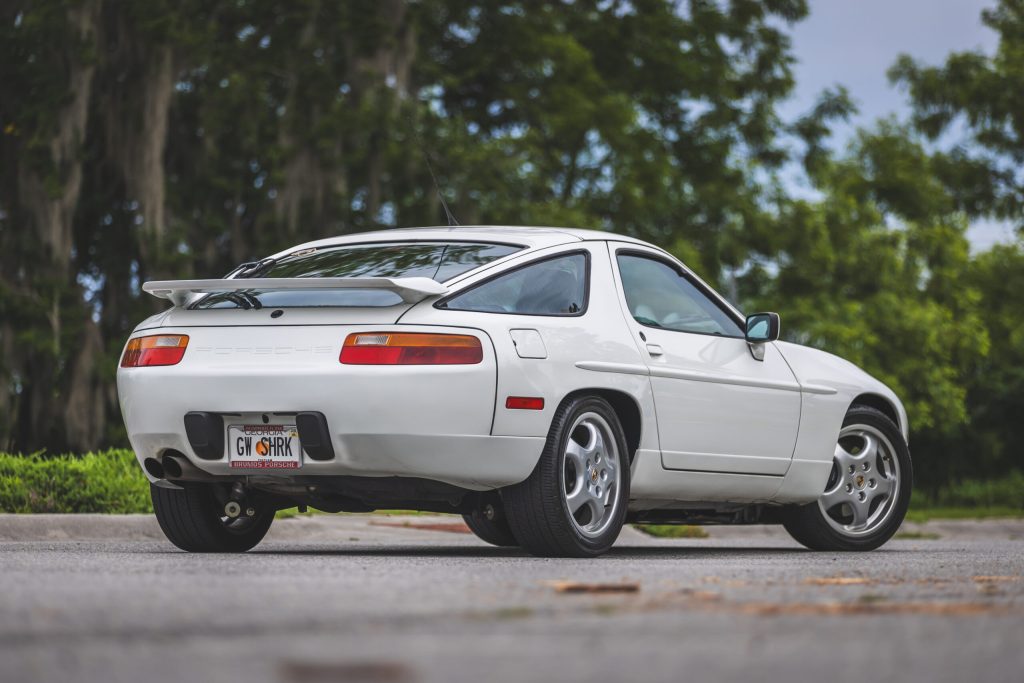
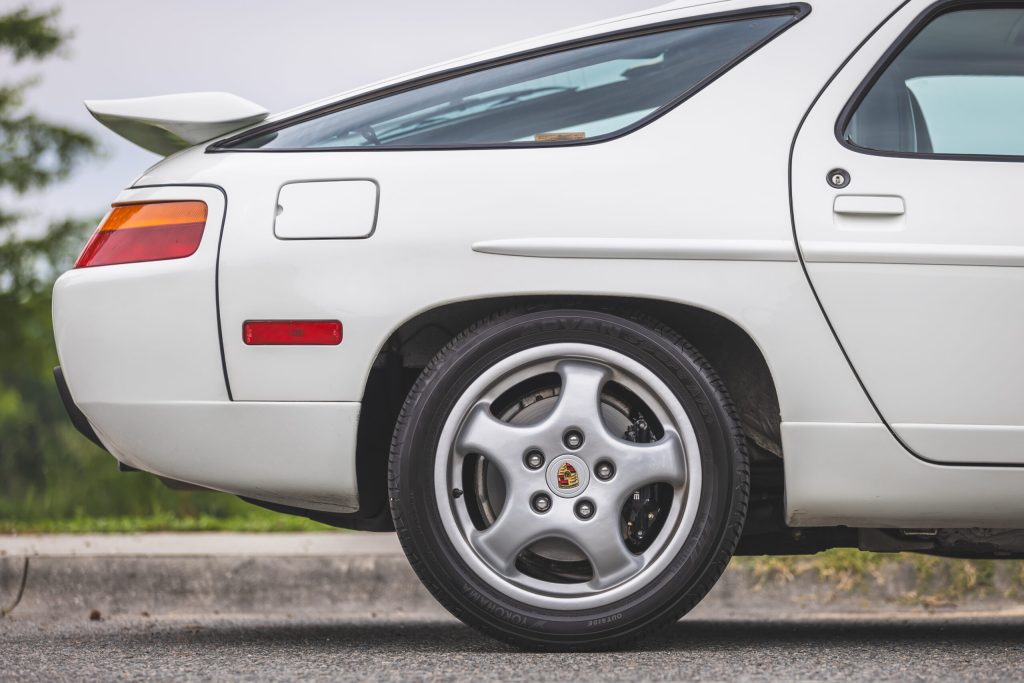
The S4, which ran from the 1987–91 model years, packs a lot of performance, luxury, and style for the £18,000 it commands on average in #3 condition. The 928 S4 is uncommon, if not outright rare like the manual-only GT and later GTS, and these days it really stands out in traffic. The cab-rearward proportions combine with the hatchback rear to give the car a distinctive profile. Pop-up headlights lend the Porsche a delightful ’80s charm, and in their flush, upward-facing rest position they give the bonnet a unique character. You can drive great distances in the leather-trimmed seats before even thinking about back spasms, the trunk is more usable than the 911’s frunk, and you can increase the space by folding down the rear seats.
When wearing the GTS’ larger, 911-style wheels, as did the 1987 model-year car we drove, the 928 S4 has an even more aggressive stance that pairs nicely with the rear spoiler’s sportier sensibility.
As you land in the 928’s bucket driver’s seat, the cockpit feels tidy – more sports car than luxury cruiser. The seating position is low, with plenty of lateral space for both front passengers. On the outer side of the bottom seat cushion are its electronic controls, which work well and offer a surprisingly modern degree of adjustability. Optional upgrades for the S4 included adjustable lumbar support as well as a memory function that included side mirror position.
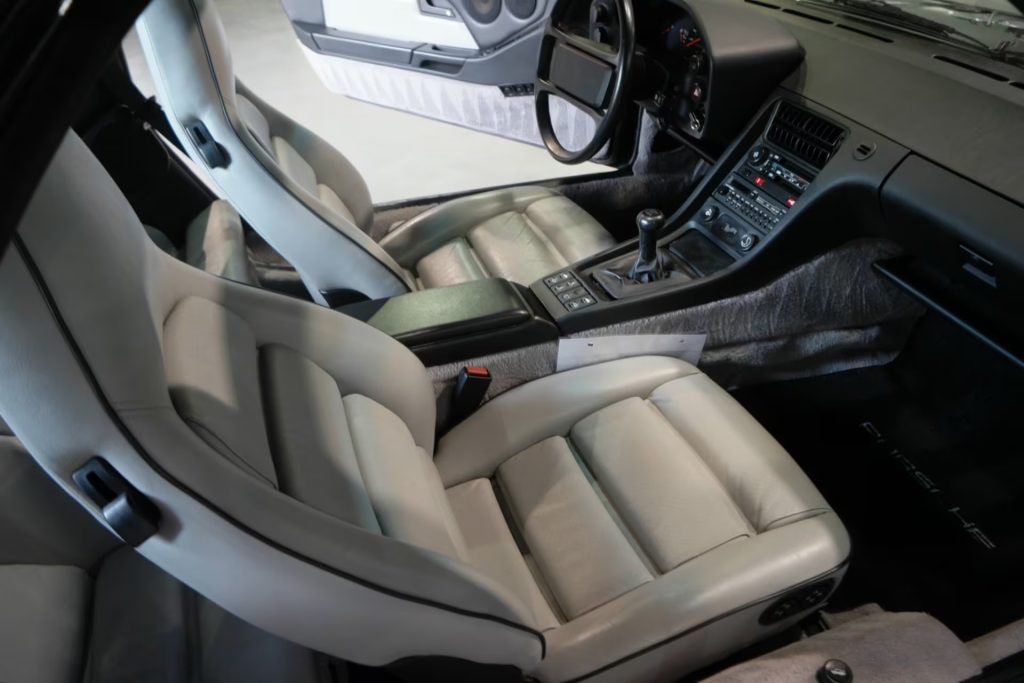
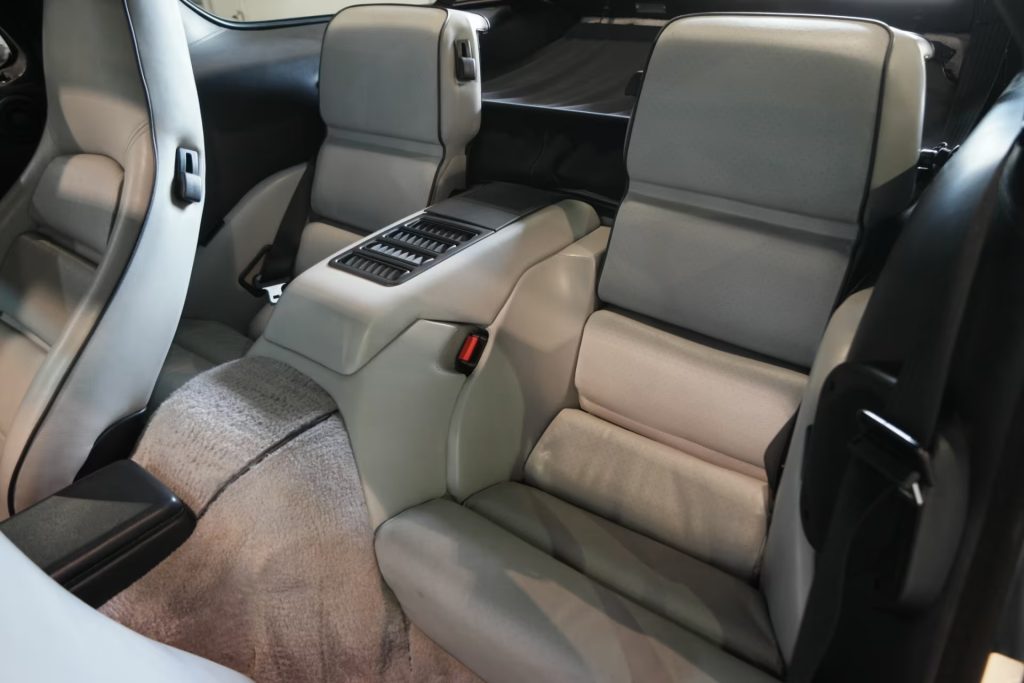
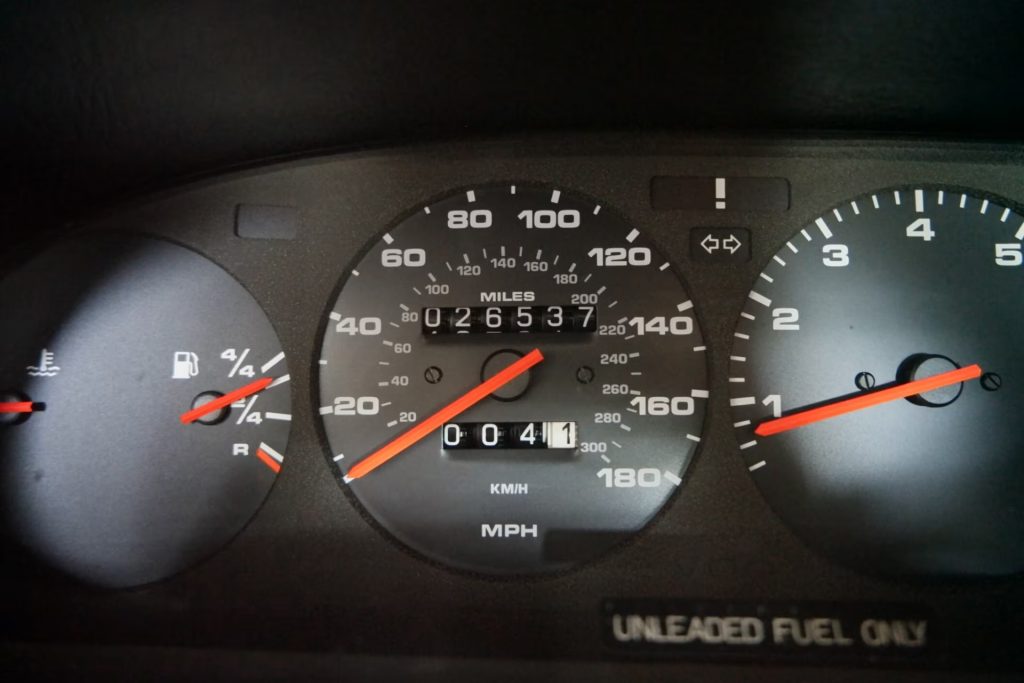

The thin-rimmed, perfectly sized steering wheel sits almost in the driver’s lap, framing clear and legible gauges. Working the controls on the centre stack seems a bit obtuse at first glance, although nothing an owner wouldn’t adapt to in short order. Compared with a 911, the environment feels airier but still snug.
I depress the clutch pedal and twist the ignition, impressed at the ferocious growl of the 5.0-litre V8 as it barks to life. The clutch, positioned way off to the left, demands more pressure at the top of the pedal travel than I was expecting, and there’s a novelty to the five-speed transaxle’s dogleg pattern. Throws are short. Each gate offers positive, mechanical feedback, but the layout is somewhat narrow and it’s easy for the novice to grab the wrong gear. A high majority of 928 S4s were delivered with a four-speed automatic transmission.
This Porsche feels noticeably happier at speed than it is puttering around town. The naturally aspirated V8 wants high revs, rewarding late shifting with a mechanical chorus from the intake and throaty rasp from the exhaust. (Reasonably tall gearing enables this, and much handiwork around town is doable in second or third gear.) There is a willingness and eagerness to this engine that encourages high speed. Above 60 mph or so, the steering and suspension settle into an easy rhythm. What feels at first like a nonchalant chassis transforms in high-speed bends, exhibiting remarkable agility and composure even with generous mid-corner throttle.
The S4’s brakes – employing updated, larger-caliper pistons for 1987 – are also phenomenal, with stunning stopping power and outstanding feel through the pedal. In a March 1987 road test in Road & Track, the magazine recorded stopping distances of 137 feet from 60 mph and 234 feet from 80. “That’s shorter than any production car we’ve ever tested save the Ferrari 412, which does [80–0 mph] in 230.”

The 928’s mature, high-performance driving experience holds up today – especially so for well-maintained examples. Such high pricing and low demand in the late 1980s and early ’90s resulted in substantially lower resale, explains Porsche Club of America technical director Manny Alban. “928s fell in the hands of new owners who enjoyed the depreciated pricing but did not want to partake in the required maintenance which would be quite pricey. Many suffered from deferred or quick fixes to get sold. Thus, when enthusiasts get their hands on one, they quickly find out that there’s a lot of work to be done to be bring it up to spec.”
These days, three decades since the newest 928s, it’s a sure thing that any original parts made from rubber are due for replacement. That includes cooling components, engine mounts, suspension bushings, as well as weather seals. “If the car has a sunroof,” says Alban, “check the sunroof drains for any clogging. If water doesn’t flow freely through those drains, it will end up in your interior. There’s a good chance that window seals, especially the rear hatch, have shrunk or dry-rotted and are no longer keeping water out.”
Electronics are another sensitive area, which means it’s critical to check that everything in the interior works as expected. “It’s no secret that the wiring harness is extensive and not inexpensive,” says Alban. “What may seem like a simple fix can turn into a multi-day repair. This includes air conditioning, heat, windows, radio, etc. If the owner has a garage that will darken the interior, take a look at all the bulbs. Not just the instrument cluster but the switches that are supposed to be illuminated.”
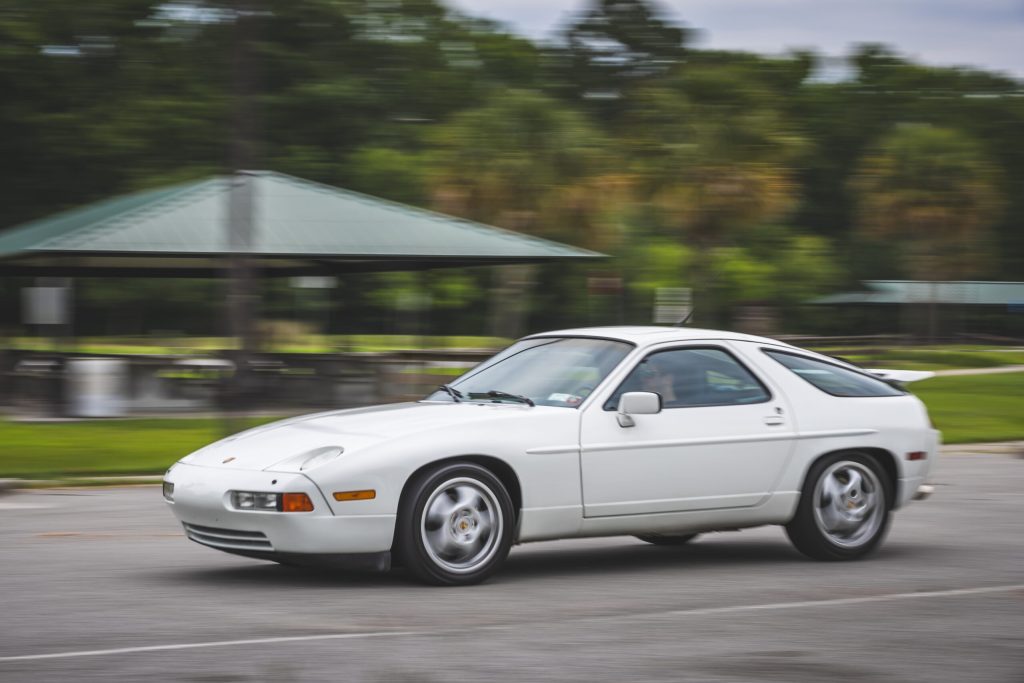
Alban points out that the 5.0-litre V8 in the S4 is known for its reliability, but like any other engine, that depends on a history of preventative maintenance. Anything short of that reduces the lifespan of critical components and systems.
High repair costs help explain why better-maintained 928s tend to attract more serious buyers than poorer-condition examples. Another, perhaps, is substitution theory – namely, that 911 prices have gotten so out of reach that 928s started to look more appealing.
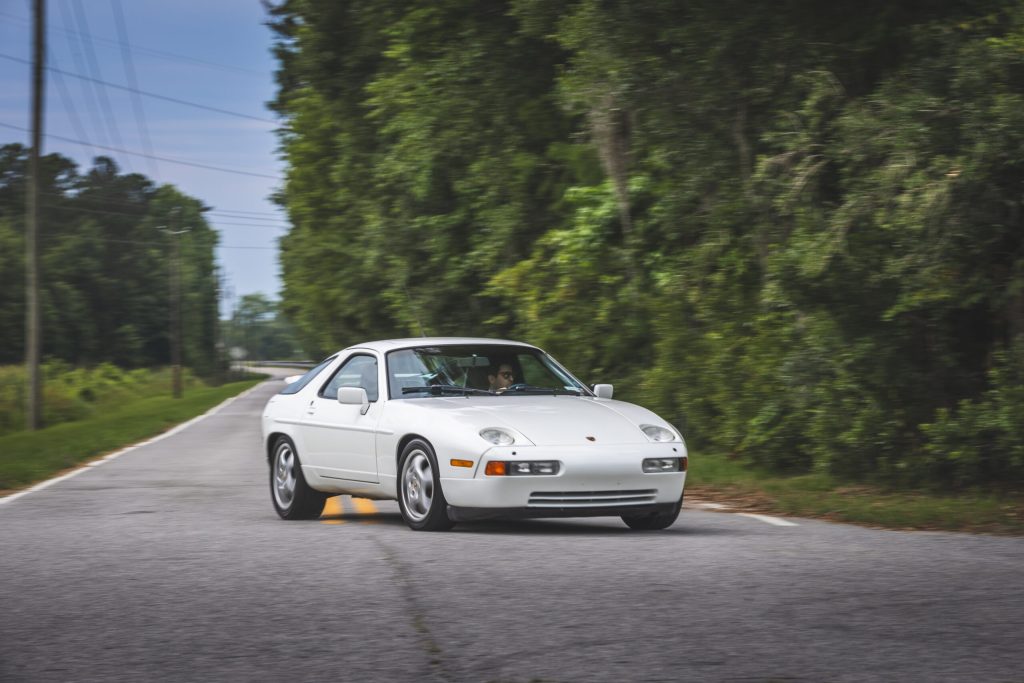
Younger buyers (Gen X and younger) tend to represent the majority of 928 interest. While this slightly younger demographic bodes well for the 928’s future, demand is still dwarfed by the flagship 911.
It can be tempting to dismiss the 928 as a kind of road-not-taken sideshow, always living the 911’s shadow. And while nobody doubts the 911’s supremacy in the Porsche hierarchy, that perspective dismisses the 928’s significance. This was a world-class GT car that stayed in production for nearly two decades, continually improving over time and showcasing cutting-edge design and technology that Porsche would eventually introduce to the 911. Front-end design cues from 1980s 928s previewed similar changes to the 964-generation Carrera, while Porsche’s “Weissach axle” rear suspension technology made its way to the later 993-generation 911.
If nothing else, the 928 is a different-flavoured Porsche that stands for the company’s bold vision and innovation at a time when the future looked bleak. These are sophisticated cars with a personality all their own, and the S4 model makes a strong case for the best of the breed.
